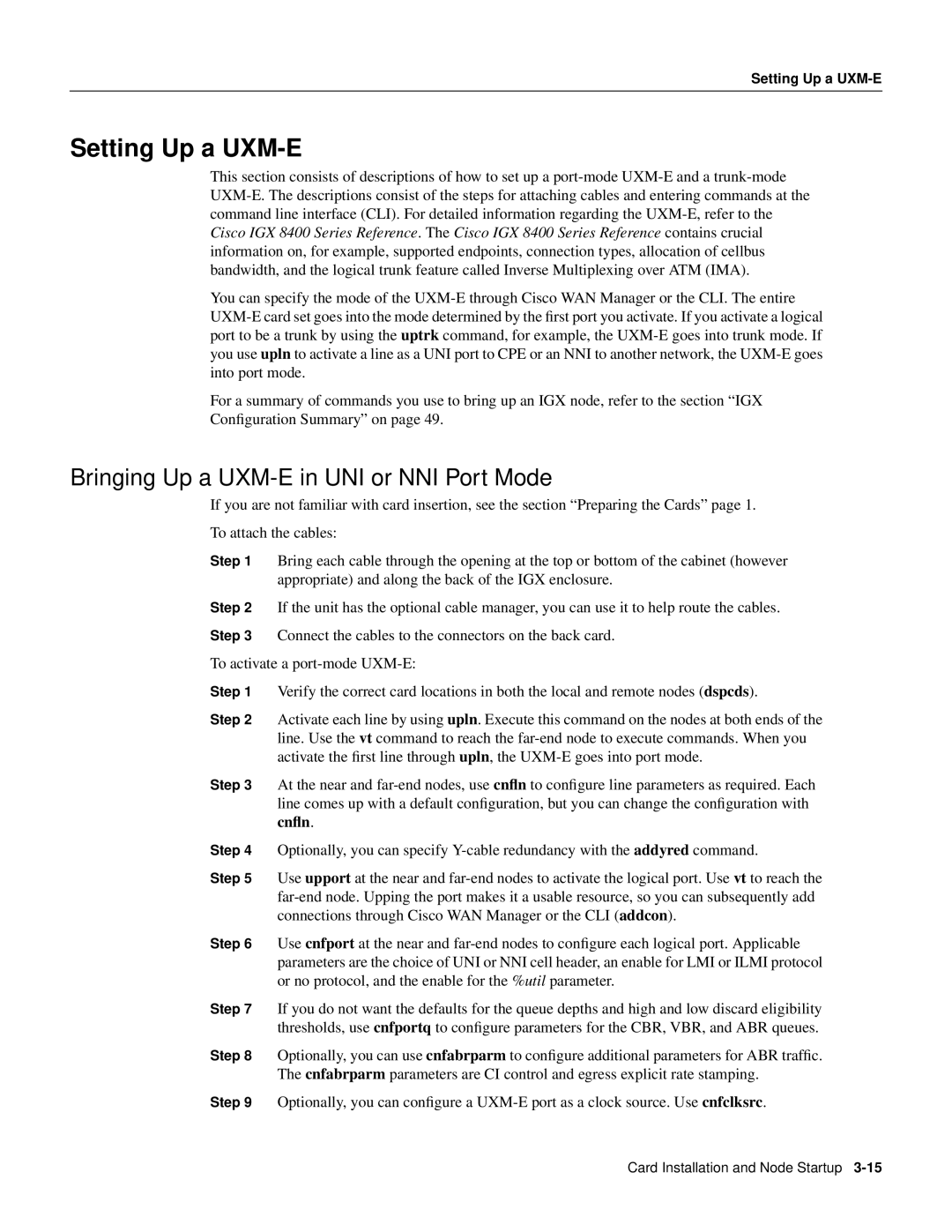Setting Up a UXM-E
Setting Up a UXM-E
This section consists of descriptions of how to set up a
You can specify the mode of the
For a summary of commands you use to bring up an IGX node, refer to the section “IGX
Configuration Summary” on page 49.
Bringing Up a UXM-E in UNI or NNI Port Mode
If you are not familiar with card insertion, see the section “Preparing the Cards” page 1.
To attach the cables:
Step 1 Bring each cable through the opening at the top or bottom of the cabinet (however appropriate) and along the back of the IGX enclosure.
Step 2 If the unit has the optional cable manager, you can use it to help route the cables.
Step 3 Connect the cables to the connectors on the back card.
To activate a
Step 1 Verify the correct card locations in both the local and remote nodes (dspcds).
Step 2 Activate each line by using upln. Execute this command on the nodes at both ends of the line. Use the vt command to reach the
Step 3 At the near and
Step 4 Optionally, you can specify
Step 5 Use upport at the near and
Step 6 Use cnfport at the near and
Step 7 If you do not want the defaults for the queue depths and high and low discard eligibility thresholds, use cnfportq to configure parameters for the CBR, VBR, and ABR queues.
Step 8 Optionally, you can use cnfabrparm to configure additional parameters for ABR traffic.
The cnfabrparm parameters are CI control and egress explicit rate stamping.
Step 9 Optionally, you can configure a
Card Installation and Node Startup
